
Blackcap
Basin
These photos show the progression of the
repair of a rock trail segment on the Blackcap Basin Trail.
Since the Kings river sometimes overflows & runs down this
segment, we hope the repair will last 50 to 75 years. This
segment is about 25 yards in
length.
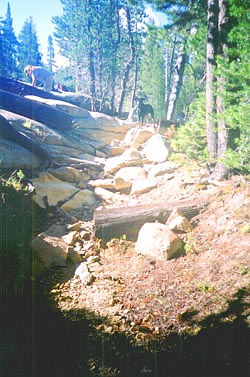
This is the lower part of the segment
that need repair. It was almost impassable, especially for
'stock' (pack animals) whose steel shoes made it VERY
slippery!
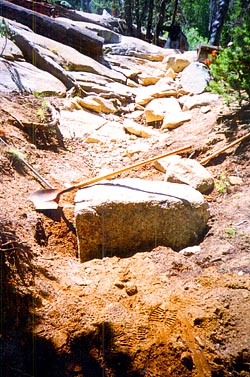
The first sep or "keystone" is carefully
set into place. This nice piece of granite weighs about 500
lbs.
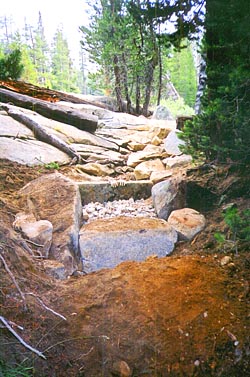
Drainage gravel is placed... The second
step has been set. Also, the trail has been bordered with
large granite rocks (the one on the left weighs almost 1/2
ton) and some "crush fill" has been created between the steps.
The large rocks keep hikers, stock, & water from
erodingthe sides of the trail. The crush fill becomes a trail
bed, helps with drainage, & helps to keep other parts
locked into place. (see next
picture)
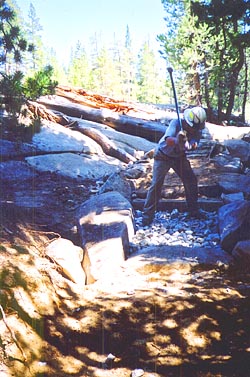
This is how the crush fill is
created. Larger stones are hammered into smaller crushed
rocks. (much easier than trying to find & carry
crushed rock to the trail)
more later ...
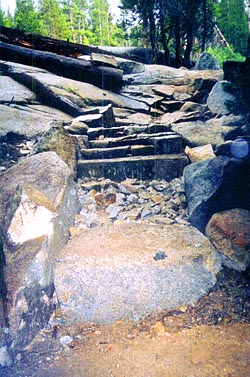
Rocks set above the second step are known
as "rip-rap" trail tread. The key here is to have each rock
top be as level as possible while keeping the average slope
consistant with that of the trail. Each rock is mostly burried
and locked into its brothers (what you see is only an eighth
of the rock). The flat tops help keep hikers & stock from
sliding back down the trail. This type of trail tread also
holds up better where water often runs down the
trail.
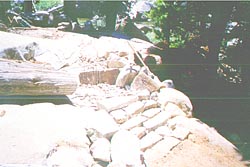
Above the Rip-Rap tread crush fill has
been added and another step has been set. Below the Rip-Rap
Tread dirt has been spred on top of the crush fill to make it
easier to walk on and to help keep the crush fill in
place.
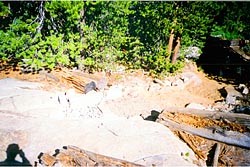
The finished product. Dirt has been
spread on the crush fill below the rip-rap tread between the
first 2 steps.Also, in the shadow to the right, two log check
dams have been installed to help keep the lower part of this
segment from washing out during the wet season. This project
took five people six days. Hopefully it will last 50 to 75
years.








